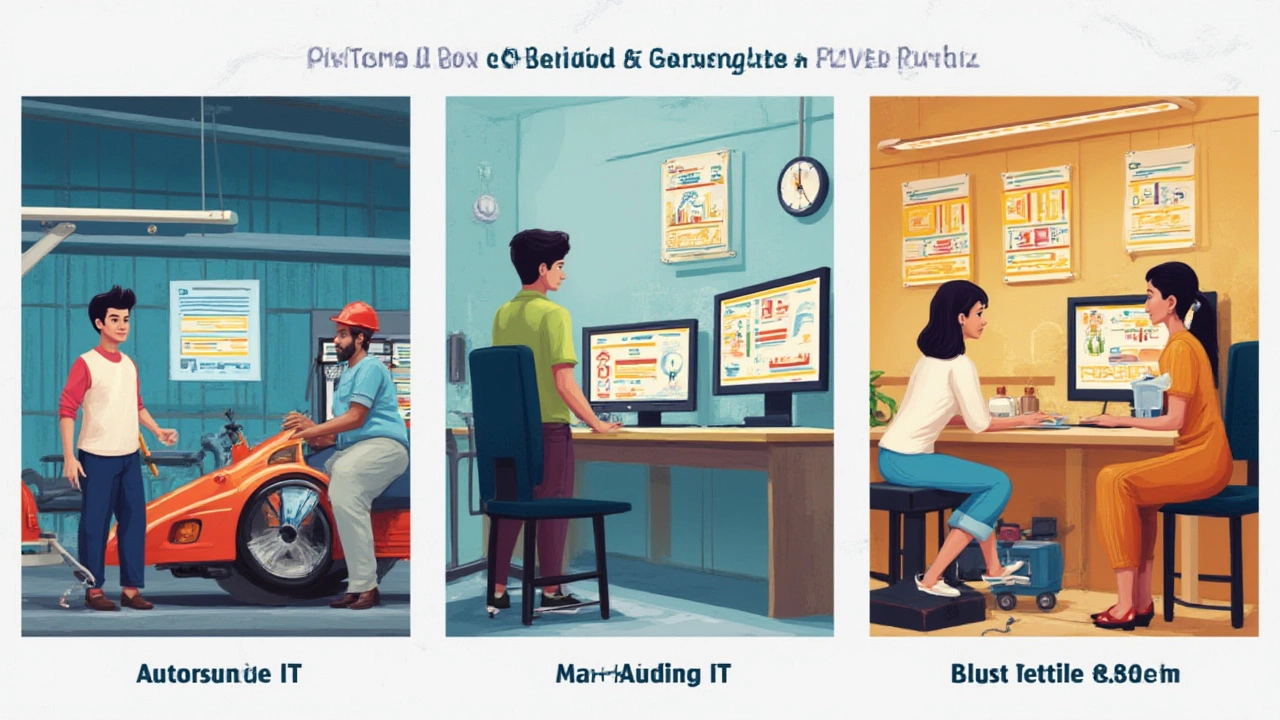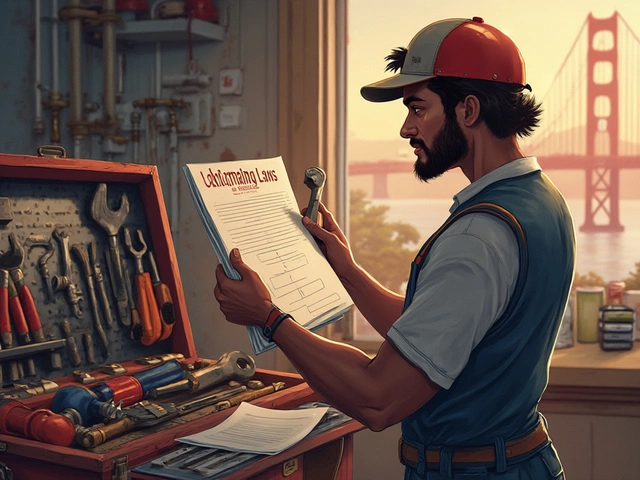Two years, three years, sometimes four—why do people talk about wildly different lengths when it comes to apprenticeships? Unlike college degrees, this isn’t a cut-and-dry answer. The idea of spending years working your way up can feel daunting if you don’t know what to expect. Back in 2023, there were over half a million apprentices in the US alone, and yet hardly anyone seems to know exactly how long these things last. Let’s clear up the confusion and talk real numbers, industry quirks, and whether that coffee-fetching stereotype is still true (spoiler: not for long).
What Determines the Length of an Apprenticeship?
Turns out, an apprenticeship isn’t a one-size-fits-all deal. Some programs are short, almost like intensive bootcamps. Others are serious marathons, stretching out as long as architecture school. So, what changes the game?
It mostly boils down to a mix of government rules, industry standards, and the skillset you need to master. If you’re jumping into carpentry or electrical work in the US, the Department of Labor usually says the program needs to run for at least one year, but most last between 2,000 and 8,000 hours—roughly one to four years. Go for something like hairdressing, and you’re usually looking at about 1 to 2 years. Plumbing? Add another year or two depending on your location and licensing rules.
Different countries set their own benchmarks. For instance, in the UK, advanced apprenticeships (often called Level 3) generally run for 2 years, while higher apprenticeships or degree apprenticeships often stretch 3 to 6 years. Germany’s famous dual system, which combines work and classroom study, sets most apprenticeships at 3 to 3.5 years—no shortcuts there. Australia, on the other hand, lets some trades finish in as little as 12 months if you already have matching school credits and you push hard.
But it’s not just about job type or country. There’s also the question of hours versus competencies. Traditional trade apprenticeships like welding count on clocking up hours—think 8,000 hours for an electrician’s license in California. Tech companies, though, might run programs that only take six months if you prove your coding skills fast enough.
Makes you realize how helpful it is to ask about the difference between time-based and competency-based apprenticeship tracks. Competency models are growing, especially in tech: employers say, “If you can do the work, you’re done.” No more slogging through hours just to hit a number.
Don’t forget about on-the-job training versus classroom time. Most traditional programs (plumbing, carpentry, culinary, etc.) split your learning; about 80% happens in the real world, 20% in the classroom. The supervised work hours are rigidly counted. In contrast, some ‘new collar’ jobs—digital marketing, software development—might spend much more time online or in blended learning settings, and the timelines are shorter. So if you see an ad for a twelve-month apprenticeship, check what kind it is and what “completing” actually means.
Want a tip? If you’re overwhelmed by options, start with this: look up the minimum legal requirements for apprenticeships in your area and field. It spares you from reading through a bunch of employer promises and tells you what to expect at a bare minimum. You can search the Department of Labor’s website or your state’s apprenticeship portal for official timelines that employers can’t wiggle out of.
For a quick look at common apprenticeship durations, check out this table based on 2024 data:
| Industry | Average Duration (Years) | Typical Requirements |
|---|---|---|
| Electrician | 4-5 | 8,000 hours + classroom |
| Plumber | 4-5 | 8,000 hours + licensing tests |
| Carpenter | 3-4 | 5,000-8,000 hours |
| Hairdresser | 1-2 | 1,500-2,000 hours |
| Software Developer | 0.5-2 | Project-based/competency model |
| Culinary Chef | 2-3 | Workplace plus formal study |
| Mechanical Engineer (Degree Level) | 4-5 | Work + degree coursework |
There’s no single answer to “how long is an apprenticeship?” but you can narrow it down pretty quickly once you know your field and location.

Industry Insights: How Apprenticeship Durations Compare
If you talk to folks across industries, you’ll notice a wide gap. Three years in manufacturing can mean something completely different than three years in fashion or IT. Take my buddy Ben—he’s a line worker in aviation maintenance, slogged through a 5-year program with rounds of certifications and not a single day wasted. My cousin Jenny, meanwhile, got a marketing apprenticeship done in 12 months, and now she’s already leading a small team. Go figure.
Construction and skilled trades in the US, UK, Australia, and Germany usually top the charts for length. The big reason? Safety regulations and strict standards. Anyone who’s crossing wires or handling gas lines needs serious hands-on time before they’re signed off. These apprenticeships take anywhere from three to five years, often with mandatory classroom elements and exams sprinkled throughout.
Meanwhile, newer apprenticeships in software, digital marketing, or healthcare admin often run one or two years—sometimes even less. Employers are betting that if you can show what you know, you’re ready sooner. Google’s apprenticeship program, launched in 2022, famously said, "We believe that qualified talent comes from all backgrounds, not just four-year colleges.” Their apprenticeships often last 12 to 20 months, with folks getting full-time offers if they hit skill checkpoints early.
Healthcare is another outlier. In the US, becoming a pharmacy tech through an apprenticeship runs roughly 15-18 months, but a registered nurse apprenticeship (especially in Europe) goes up to four years and typically nets you a degree at the end. Hotel management, hospitality, and retail often keep their apprenticeships under 18 months, pushing fast-track skills and leadership on the job rather than loading students up with textbook work.
And don’t sleep on the ‘degree apprenticeship’ trend. In the UK and Australia, you can earn a Bachelor’s or even a Master’s degree through a company-sponsored apprenticeship. These take as long as traditional full-time study—three to six years—but you earn a wage the whole time and graduate with no student debt. That’s a game-changer, especially for people priced out of college. According to a 2024 report by the UK’s Institute for Apprenticeships and Technical Education, "Degree apprenticeships are bridging the gap for young professionals who want to avoid overwhelming debt and get paid experience.”
Here’s the real kicker: More than 90% of apprenticeship graduates are still working in their field one year after completing their program, as reported by the Bureau of Labor Statistics in early 2024. It’s a stat that college grads in some fields can only dream of.
Some places are also mixing in micro-apprenticeships—quick, focused experiences in specialties like UX design, usually just 6-12 weeks long. These aren’t full replacement for a trade license, but they do help you break into competitive roles or trial different career paths without a years-long commitment.
One important thing: Even within the same company, different locations or business units can set their own timelines. I once talked to a coffee chain manager in Portland whose barista apprentices did three months, then traveled down to Los Angeles where it was a grueling six months. Local business needs, union rules, and even weather patterns (think construction) can tug the timelines shorter or longer.
If you’re thinking about apprenticeships, compare them not only by how long they run but also how fast you’ll ramp up into independent work or higher pay. Early advancement is a perk in many company programs: they reward fast learners with raises as soon as they hit milestones—even if the official end date is still way off.
People sometimes worry about being stuck "fetching coffee" for two years. Reality check: Most modern apprenticeships are legally required to give you progressive responsibility, not just grunt work. According to federal guidelines, apprentices must spend "a progressively increasing portion of their time" learning real skills and tasks each year on the job. So if you feel stuck at the basics for more than a few months, it’s totally reasonable to ask your mentor or HR about the job rotation plan.
For anyone still deciding, here’s a quick rundown of typical apprenticeship durations by sector:
- Industrial Trades (Electrician, Plumber, Carpenter): 3-5 years
- Automotive Technician: 2-3 years
- Healthcare (Nursing, Pharmacy Tech): 1.5-4 years
- Hospitality & Retail: 0.5-1.5 years
- IT/Tech: 0.5-2 years (as short as 6 months for coding bootcamp-style tracks)
- Creative Industries (Design, Fashion, Media): 1-3 years
- Degree Apprenticeship: 3-6 years with higher education blended in
Just don’t pick based on speed alone. The best apprenticeship for you is the one that gets you where you want to be—earning, learning, and building something real, not just counting clock hours.

Tips for Picking the Right Apprenticeship Timeline
If you’re asking, "How long is an apprenticeship?" you’re really asking, "How long does it take to get what I want out of this?" Don’t get distracted by just picking the shortest slog. Here’s my battle-tested advice after years of helping friends and, honestly, watching Nina navigate her graphic design apprenticeship:
- Match the length to your goals. Want to be a master electrician, licensed and highly paid? Accept the longer program, because shortcuts don’t lead to the top jobs (or safe wiring jobs).
- Ask about fast-tracking. Some programs let you zip ahead if you master skills faster. Tech and digital marketing companies usually have testing-out options or even paid projects that count toward hours.
- Compare pay raises during the program. A longer term sounds rough, but getting regular boosts every 6 or 12 months makes that journey a lot sweeter.
- Look at what happens after. Some fields (plumbing, auto tech) require finishing an apprenticeship to even get licensed. Others treat an apprenticeship more as proof you’re ready for the next step.
- Ask about support and mentorship. A fast program without a mentor can feel like a wild scramble. On the other hand, staying too long in an aimless program is just as rough. Good apprenticeships have a clear ‘progression map’ showing what new skills you’ll learn, and when.
- Consider life outside work. Got a family or need a steady second income? Evening and part-time apprenticeships may take longer, but they keep your life balanced.
- Check the credentials. Government-registered apprenticeships are always safer bets—those fancy private "traineeships" sometimes promise shorter timelines but under-deliver when you try getting a job later.
- Think global. A completed apprenticeship in Germany or Switzerland is recognized by many other countries. Short local programs may not travel as well.
And here’s a crucial piece: Always ask for real stories from current apprentices. I remember talking to one apprentice at a brewery who laughed about how he thought it was just pouring beer and cleaning up—turned out he was running fermentation equipment and designing new brews just six months in!
If you’re still on the fence, remember this quote from the American Institute for Apprenticeship Training:
"The length of an apprenticeship is best measured not just in hours, but in the confidence, skills, and industry connections a person walks away with."
Long, short, or somewhere in between—an apprenticeship isn’t about clocking in and waiting for a diploma. It’s about using that time to launch your career, learn real skills, and start earning. That’s a timeline worth paying attention to, even if it’s got a few extra zeroes attached.





Write a comment